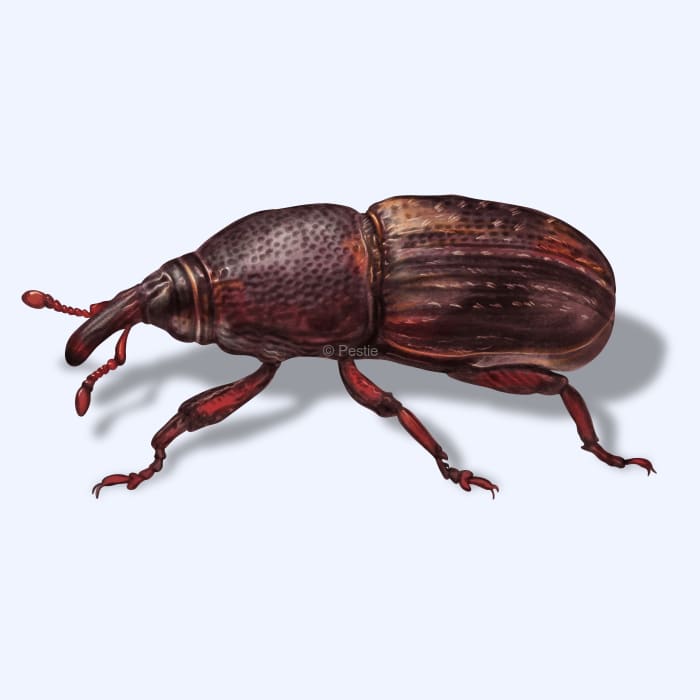How to identify and get rid of rice weevils

Rice, rice weevil: kicking rice weevils out of the pantry
Have you ever opened up a bag of rice and wondered why your rice was moving? We hate to break it to you, but that rice isn’t moving; it’s rice weevils!
These sneaky little beetles love to hitchhike inside your stored grains and seeds, turning your stocked pantry into an all-you-can-eat buffet (leaving you with the bill and the mess to clean up).
While they're not harmful to humans, their ability to play hide and seek with your grains can lead to unexpected surprises in your meals. Even though females only lay 2-6 eggs a day, that adds up to around 300 eggs over their lifetime.
Females will use their long snouts to chew a whole in an individual grain and lay an egg. She then seals the seed with a gel-like fluid, and the larvae grow inside the grain. After about a month, the new adult chews through the seed and starts the whole cycle over again.
How to identify rice weevils
Rice weevils are tiny beetles that can be hard to identify. Like most weevils, they have elongated mouthparts that form a long snout. They are dark brown to black in color, and if you look close enough, you’ll see four orangish dots on their backs. Also, along their backs are tiny punctures that give their exoskeleton a textured look.
You'll know you have an infestation on your hands if you find damaged rice grains, where they've chewed through to lay their eggs, or if you notice fine powder at the bottom of your grain containers, you know rice weevils are to blame.
How big are rice weevils?
Rice weevils only get to be about 1/8 of an inch long.
What other beetles look like a rice weevil?
Other grain beetles, especially maize and granary beetles, can look like rice weevils. You’ll probably need a magnifying glass or microscope to tell them apart. To be honest, managing them is nearly the same, and they all eat similar things. Sometimes, they even mate with each other and form hybrids! So, if scientists have a hard time telling them apart, we won’t hold you to it either.
Where do rice weevils live?
Rice weevils are found across the US, especially in areas where grains are stored.
How to get rid of rice weevils
To get rid of rice weevils from your pantry, follow these tips:
- Freeze suspected infested grains for at least three days to kill any live weevils.
- Throw out any infested grains and take them away from the home
- Keep grains in sealed, airtight containers to prevent infestations.
If you want to prevent rice weevils from eating your stored grains, clean up any grain or flour spills in storage areas. Pay close attention to corners or hard-to-reach areas, and thoroughly vacuum your pantry to prevent reinfestations.
Treat rice weevils with Pestie
If you're still having trouble keeping rice weevils away, the best option is to use a pro-grade, effective pest control solution like Pestie.
Pestie is a do-it-yourself pest control solution that's specially designed to keep rice weevils and other pests away from your home.
With Pestie, you can rest easy knowing that your living space is protected and free of creepy crawlies. And the best part? It's designed for people, pets, and the planet, so you can say goodbye to harsh chemicals and hello to peace of mind!
- Save hundreds compared to traditional annual pest plans
- People, pet, and planet-friendly
- Pro-grade customized formulas
Quick facts
- Scientific name
Sitophilus Oryzae
- Colors
Brown and black
- Life span
6-8 months
- Diet
Rice, wheat, corn, popcorn, beans
How dangerous are Rice Weevils?
Low danger risk
Rice weevils are harmless to humans and don’t pose any health concerns.
Even though they are small and stay close to stored grains, rice weevils are surprisingly good flyers and are attracted to lights.








